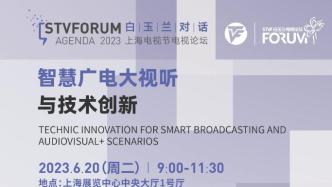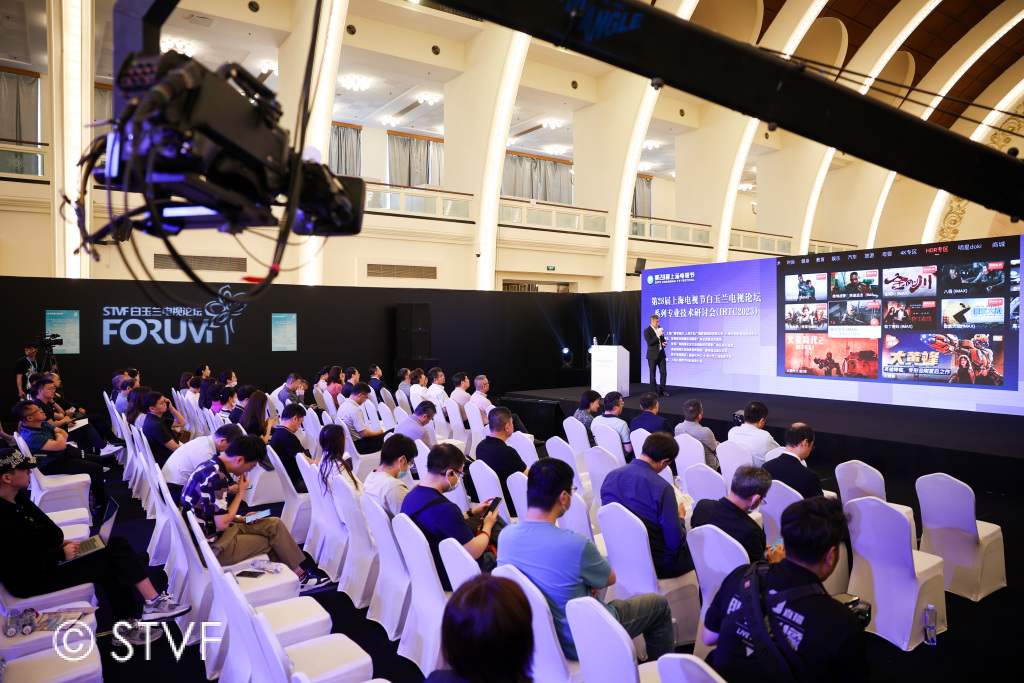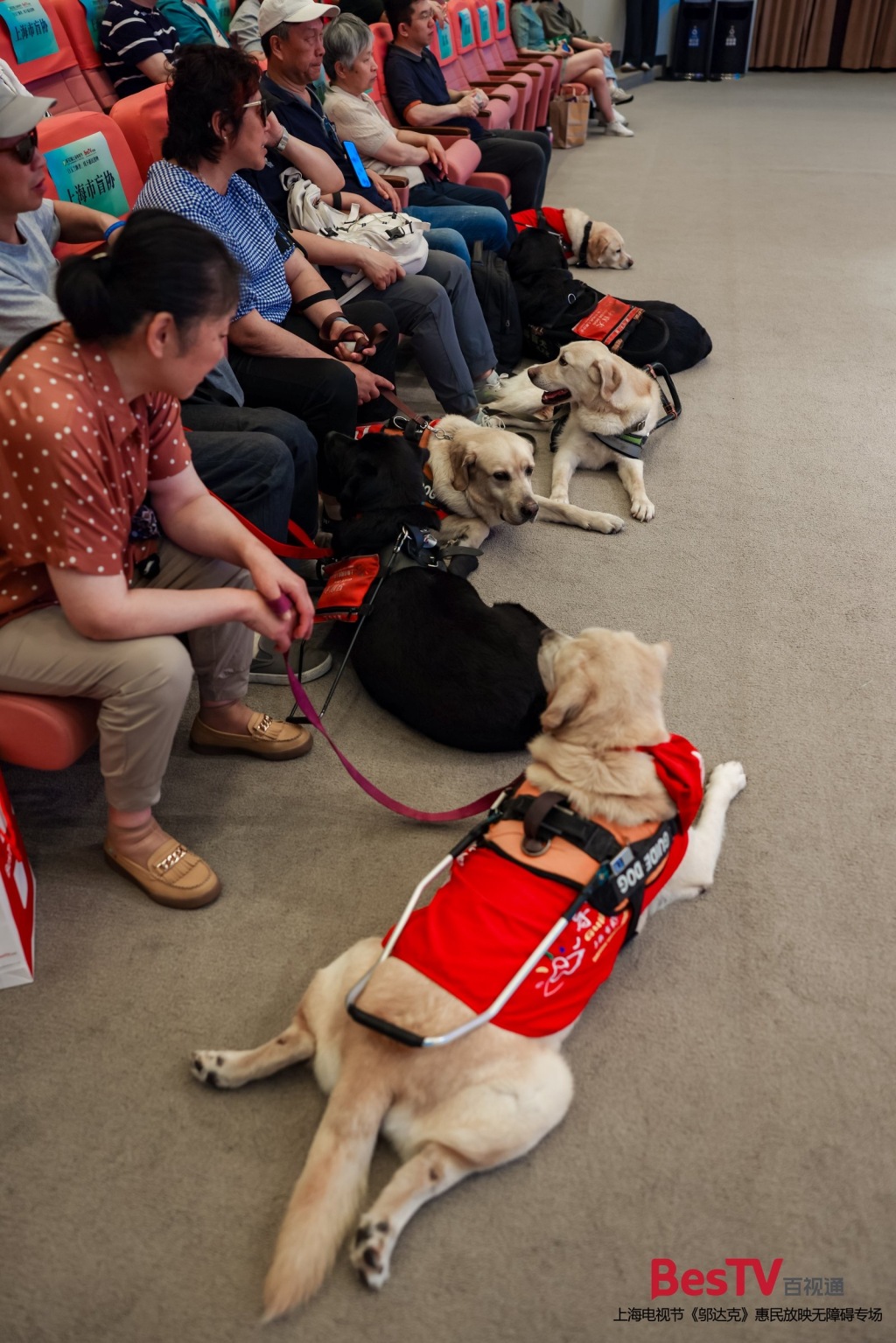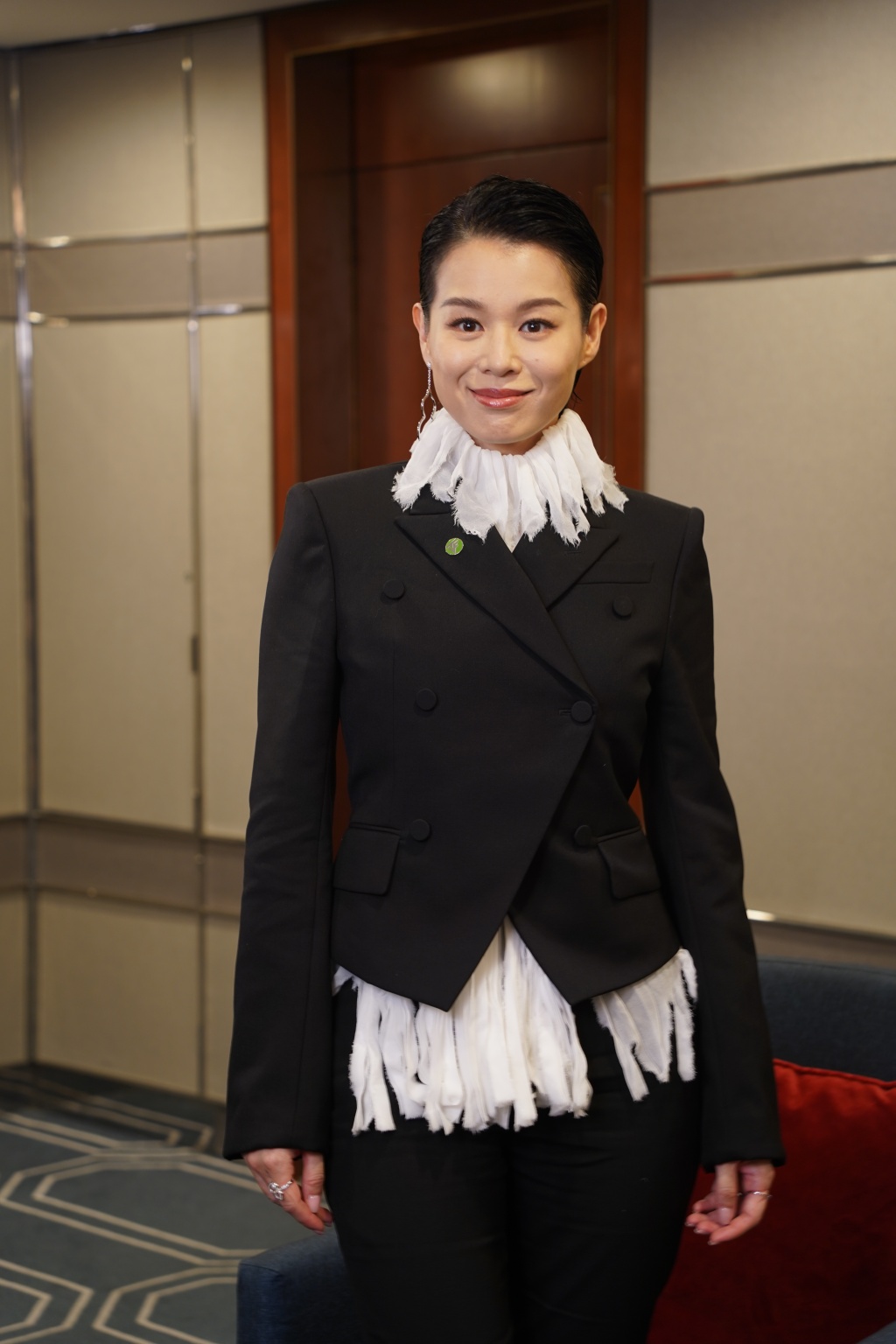
On June 20th, the 28th Shanghai TV Festival "White Magnolia Dialogue" TV Forum "Smart Broadcasting, Audiovisual and Technological Innovation" theme report meeting was held at the Shanghai Exhibition Center. Over the years, the Shanghai TV Festival Magnolia TV Forum Technical Seminar has been committed to promoting the development of the radio and television industry, and has grown into one of the most influential international events in China's radio and television industry. With forward-looking and realistic themes, the seminar plays an important role in leading and promoting the rapid development of the radio and television industry.

Forum site
This theme report will bring together relevant senior leaders and industry representatives from radio and television stations, Internet companies, universities, and technology companies from all over the country to discuss the development trends, challenges and opportunities of smart radio and television audio-visual technology. The report will focus on the future planning of radio and television, the generation of artificial intelligence content, future TV, big data, ultra-high-definition and other emerging technologies, explore innovative applications in smart production and broadcasting, smart network, high-tech audio-visual, etc., and empower urban digital transformation, omni-media The technical path of content production and other large audio-visual scenes, from technology to business, from policy to market, from industry chain to industry ecology, comprehensively discusses the profound impact and changes brought by technological innovation on the future TV ecology.
Jiang Wenbo, a member of the editorial meeting of China Central Radio and Television, mentioned that according to statistics from the Ministry of Industry and Information Technology, China's 5G users have exceeded 1.2 billion, and household broadband users have exceeded 100 million, providing excellent conditions for the development of radio and television services. "Watching TV at home, 8K TV transmission is 120M, 4K is 36M, and now gigabit home broadband has entered thousands of households, and there is no problem watching ultra-high-definition TV at home."
In addition to a solid technical foundation, the TV industry is also constantly advancing the digital transformation of content production and technology applications. Taking Shanghai Culture Radio and Television Station as an example, since the "14th Five-Year Plan", Shanghai Radio and Television Station has vigorously promoted the digital transformation of the station group, and realized the digital regeneration of SMG value through the core development concept of "audio and video +". In the big audio-visual era, facing the challenge of redefining thousands of industries by the digital economy, Chen Yuren, vice president of Shanghai Culture Radio, Film and Television Group Co., Ltd., put forward "three persistences": "First, adhere to the professionalism and long-termism of news establishment, and maintain content production. The second is to adhere to the traditional professionalism and long-termism of broadcasting and television, and to maintain the evolutionary ability of audio and video linking new technologies and the birth of new applications. The third is to adhere to the professionalism and long-termism of the main cultural industry, and maintain the all-media cultural industry ecosystem ability to evolve."
According to Chen Yuren, SMG is actively using new technologies such as 5G, AR, XR, and ultra-high-definition. Facing emerging markets such as immersive experience, real-time interaction, and digital twins, SMG stimulates the evolutionary ability to link new technologies and generate new applications, making the value of SMG It can be regenerated and strengthened in adapting to the link between audio and video and new technologies, new entrances and new scenes. "Our IPTV and OTT cable TV systems basically have 4K production and broadcast capabilities, and a 4K satellite channel has been launched." Since 2018, SMG has maintained the output of 1-2 8K panoramic sound long videos every year. Won a number of international and domestic professional awards, realized the accumulation of experience in 8K full-process filming technology, and relied on the original virtual production team and self-research capabilities, created a virtual anchor matrix "Shen Yuya", "Dongfang Ai" and "Long Xiaojiao" is active in the fields of TV news, satellite TV variety shows and Yangtze River Delta broadcasting.
At this conference, the participants closely combined the current situation, with the theme of "Smart Broadcasting, Big Audiovisual and Technological Innovation", and based on the effective use of new technologies such as cloud data, 5G, AIGC, XR, and ultra-high definition, they imagined the era of big audiovisual , Smart radio and television technology has brought people changes in all aspects of entertainment, work, and life.
Sun Suchuan, deputy director of the Science and Technology Department of the State Administration of Radio and Television and a first-level inspector, pointed out that the current radio and television field is facing the application of a series of new technologies such as artificial intelligence, media integration, big data, cloud computing, and blockchain, and technological innovation has entered a new era. A time of great change. "In particular, artificial intelligence technology represented by ChatGPT is currently sweeping the world at an unprecedented speed." He believes that the media industry will become an important application field of artificial intelligence technology.
Wang Yanfeng, assistant director of the Shanghai Artificial Intelligence Laboratory and vice president of the Institute of Artificial Intelligence of Shanghai Jiaotong University, took ChatGPT as an example and gave a keynote report on the topic of "Universal Large Model and Generative Intelligent Media" at the forum. Regarding the epoch-making nature of ChatGPT, Wang Yanfeng likened it to "artificial intelligence ushered in the iPhone moment", "the new round of information revolution it brings will bring about profound changes in all walks of life." In his view, ChatGPT subverts There are two major contributions: one is to turn the business of artificial intelligence from To B to To C, and the other is to move special artificial intelligence to general artificial intelligence. question."
"The general large-scale model represented by ChatGPT solves a common cornerstone, and the domain large-scale model is a model that can really improve the productivity of the industry." In Wang Yanfeng's view, the current application of generative AI in the media field is the most extensive and deepest . "AIGC (Artificial Intelligence Generated Content) is an emerging content production method after PGC (Professional Generated Content) and UGC (User Generated Content). It has the advantages of being automatic, efficient, diverse and creative. Text, pictures, audio, video , and even 3D models and codes can be generated by AI, so industries with huge content demands like our media will be the first to usher in innovative applications.”
Previously, the popularity of ChatGPT has triggered heated discussions in the TV industry, such as how to use AIGC technology to break the shackles of expression and accelerate the implementation of ideas, etc. Many companies around the world have publicly stated that they will try to use ChatGPT to intervene in the content production process. Wang Yanfeng gave an example of the help brought by AIGC in the process of cooperating with the main station to restore historical images. "Under the guidance of the main station, we first started to explore the technology of ultra-high-definition video enhancement of past standard-definition materials and historical images. We have been doing this for five years, but the traditional artificial intelligence enhancement method, first, there are details. The second is the challenge of oil painting and skin-smoothing image quality. The generative AI can solve the disadvantages of the original traditional AI enhancement technology.”
Going a step further than Wang Yanfeng's technical imagination, Sun Suchuan, deputy director of the Science and Technology Department of the State Administration of Radio and Television, brought a report. He mentioned the future TV development strategic plan formulated by the State Administration of Radio, Film and Television for 2035 and the "Radio TV and Network Audio-Visual Medium and Long-term Technology Development Plan", and imagined six characteristics of "future TV" from the perspective of users:
One is channel customization. The channel will change the traditional form of unified programming by TV stations and sequential broadcast of fixed programs. It is a new form of automatically arranging and continuously intelligently pushing customized programs from the massive content library according to the audience's viewing habits. The second is diversification. In the future, presentation carriers are no longer limited to display media such as televisions and handheld terminals, and even non-screen imaging can be used as television presentations. From indoors to outdoors, no matter where or where users are, they can enjoy high-quality and convenient TV services, realizing "everything is a screen". The third is audio-visual immersion. Future TV will be ultra-high-definition, panoramic sound, multi-angle, and multi-dimensional immersive experience. Audio-visual technology combined with multi-sensory simulation technology such as smell, temperature, and humidity can mobilize the audience's three-dimensional and multi-dimensional sensory experience, bringing the audience "immersive experience" " audio-visual experience. The fourth is intelligent service. In the future, TV will no longer be a simple form of "I broadcast you to watch", but will achieve efficient matching and precise access to massive resources according to the needs of viewers and environmental changes. The fifth is interactive humanization. In the future, the TV will not only rely on the remote control to control the TV, but also use voice recognition, eye tracking, electromechanical sensing, tactile reflection, 3D gestures, etc. The characters in the TV screen interact. Sixth, the network is ineffective. In the future, it will break through the boundaries of broadcasting networks, communication networks, and the Internet, realize cross-network intelligent collaboration, and senseless switching. Fully integrated into the digital life of the people.
2023 is a critical year for the digital development of the radio and television industry, the transformation and upgrading of smart radio and television, and the comprehensive, high-quality and rapid development of radio and television. The leaders and representatives participating in the meeting reached a consensus: radio and television organizations and related technology companies need to continue to promote media integration to a deeper level In order to achieve its own transformation and reform, and deepen the main strategy of media integration. Discuss how to promote new breakthroughs and sustainable development of China's radio and television industry and media industry. At this meeting, these sci-fi plans and imaginations may become reality in the near future.

Forum Poster


